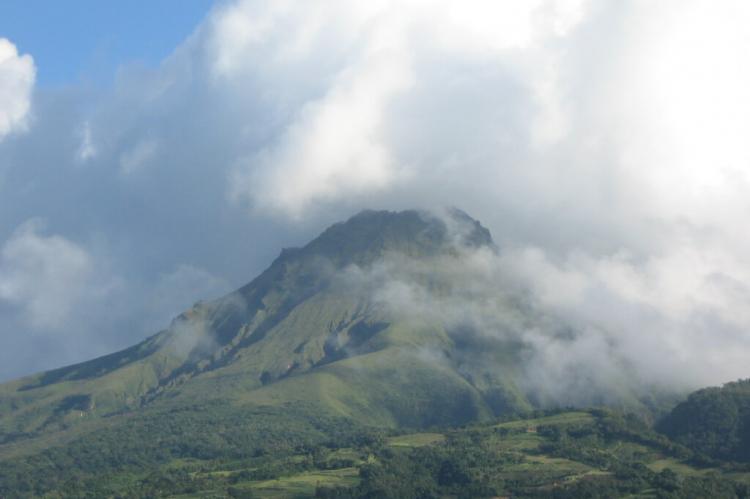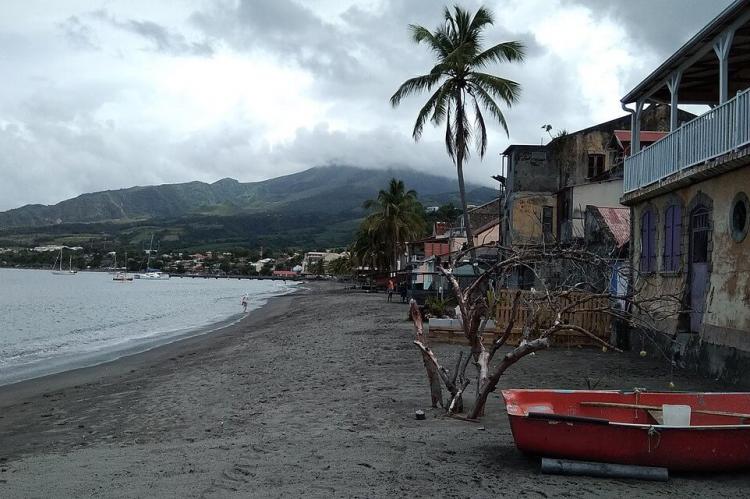Mount Pelée: The Deadly Volcano That Decimated Saint-Pierre
Rising over the lush northern coast of the Caribbean island of Martinique, Mount Pelée is an ominous presence. With its brooding, cloud-capped peak, this active stratovolcano has etched its name into the annals of history as one of the most deadly and destructive volcanoes in modern times.
Mount Pelée: The Deadly Volcano That Decimated Saint-Pierre
Rising majestically over the lush northern coast of the Caribbean island of Martinique, in the Lesser Antilles. Mount Pelée is a stark and ominous presence. With its brooding, cloud-capped peak, this active stratovolcano has etched its name into the annals of history as one of the most deadly and destructive volcanoes in modern times.
Geology of Mount Pelée
Mount Pelée's origins date back thousands of years, with the first evidence of volcanic activity dating to around 100,000 years ago. Over the centuries, the volcano has experienced numerous eruptions, though many were minor and caused little damage. As a stratovolcano, Mount Pelée has layers of hardened lava, ash, and rock fragments that have accumulated over millennia.
The 1902 Catastrophic Eruption
However, on May 8, 1902, Mount Pelée unleashed a violent and catastrophic event that would forever change the course of Martinique's history. After several weeks of increasing seismic activity and ominous rumblings, the volcano erupted with explosive force. A massive pyroclastic flow - a superheated, high-density mixture of gas and rock fragments - swept down the mountain's slopes at speeds estimated to exceed 400 miles per hour. This deadly avalanche of destruction engulfed the nearby town of Saint-Pierre, which had been the cultural and economic heart of Martinique.
The Decimation of Saint-Pierre
In mere minutes, the once-thriving "Paris of the Caribbean" was reduced to rubble. Eyewitness accounts describe a scene of unimaginable horror as the pyroclastic flow tore through the town, incinerating everything in its path. Temperatures within the flow likely exceeded 800°F, vaporizing the inhabitants instantly. In the end, it is estimated that over 30,000 people perished - making the 1902 eruption of Mount Pelée one of the deadliest volcanic events in recorded history.
The Aftermath and Legacy
The sheer scale of the disaster was unprecedented, and the impact on Martinique was devastating. Not only was the island's cultural and economic center destroyed, but the loss of life was catastrophic. The eruption also had far-reaching consequences, as it shattered the complacency of the colonial French administration and sparked a reevaluation of volcanic risk management worldwide.
In the aftermath of the tragedy, Mount Pelée's status as a menacing presence looming over the island was cemented. The volcano has erupted several times since 1902, though thankfully with less devastating consequences. However, the specter of another significant eruption continues to loom over Martinique, a constant reminder of the power and unpredictability of this geological giant.
Today, Mount Pelée stands as a somber monument to the fragility of human existence in the face of nature's raw, destructive force. The town of Saint-Pierre, once a thriving metropolis, now lies in ruins, a haunting testament to the volcano's deadly wrath. Yet, the resilience of the Martinican people shines through as they have rebuilt and reclaimed their island home, determined to honor the memory of those lost while embracing a future that treads more cautiously in the shadow of this formidable natural wonder.
Mount Pelée's legacy is one of both terror and awe—a powerful reminder of our planet's humbling and often capricious nature of our planet. As scientific understanding of volcanoes continues to evolve, the lessons of 1902 remain indelibly etched in the collective consciousness of Martinique and the global community, inspiring vigilance, preparedness, and a deep respect for the incredible power of the natural world.

Martinique relief map.





